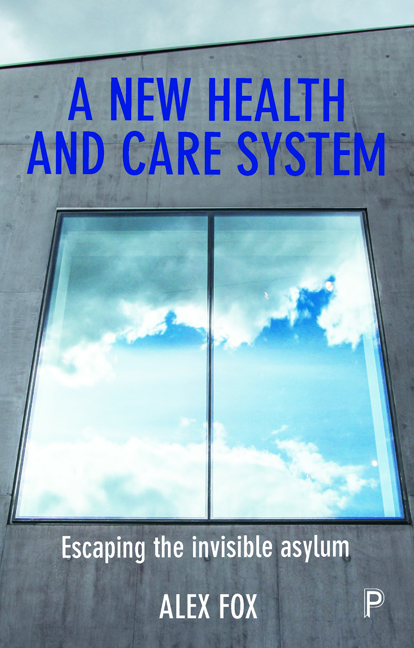Book contents
- Frontmatter
- Dedication
- Contents
- Acknowledgements
- Prologue
- Introduction
- one How we divide the world into community and asylum
- two How we create problems by trying to fix them
- three Why failure pays, but success costs
- four Risk aversion and risk indifference
- five The humanisation experiment
- six Shared Lives
- seven Designing a new national health and wellbeing service
- eight Delivering the national health and wellbeing service
- Can we escape?
- Notes
- References
- Index
- Frontmatter
- Dedication
- Contents
- Acknowledgements
- Prologue
- Introduction
- one How we divide the world into community and asylum
- two How we create problems by trying to fix them
- three Why failure pays, but success costs
- four Risk aversion and risk indifference
- five The humanisation experiment
- six Shared Lives
- seven Designing a new national health and wellbeing service
- eight Delivering the national health and wellbeing service
- Can we escape?
- Notes
- References
- Index
Summary
The question of who is helped by government has for centuries been a question of who is included and excluded from their communities. Many would see government help as a safety net which cannot capture everyone, but needs to ensure that the most sick and poor do not fall outside society. But the origins of the welfare state lie equally in decisions about who to exclude from the tangible, local communities in which we live.
The first Poor Laws, in Tudor times, were mainly concerned with punishing the idle workless and sending them back to their place of origin to work. These parish-administered systems were subsumed by the national system of the New Poor Law in the 19th century, which established workhouses as a combined form of punishment and ‘relief ‘. They removed paupers from the streets into institutions designed to be less attractive than the most menial of independent circumstances.
There had been lunatic asylums in Britain from the conversion of the Priory of the New Order of St Mary of Bethlem from a centre for alms collection in the 13th century, to a hospital and lunatic asylum in the 14th century, which gained notoriety as Bedlam. ‘Madness’ was mainly regarded as a domestic and parish issue, with only a small number of religious and charitable asylums, until the 1808 County Asylums Act empowered magistrates to build asylums in every county for ‘pauper lunatics’. These captured (literally) a broad range of groups including those we would today label as having a mental illness, a learning disability or a substance misuse problem, but also people who were considered to have stepped outside of contemporary moral boundaries, such as unwed mothers (Brunton, 2004; Porter, 2006). The number of institutions and of people inside them grew into many tens of thousands by the 20th century. A medical model of mental illness was gradually introduced into the institutions, where it coexisted and became entwined with religious, criminal justice and charitable ideas.
Welfare legislation in the 20th century abolished the workhouse for healthy workless people, replacing it with largely financial assistance, and transferred responsibility for institutional care for the ‘disabled, sick and aged’ to local government and then, in 1948, to the National Assistance Board and the new National Health Service (NHS).
- Type
- Chapter
- Information
- A New Health and Care SystemEscaping the Invisible Asylum, pp. 1 - 12Publisher: Bristol University PressPrint publication year: 2018

